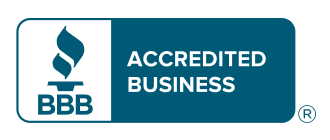The Occupational Safety and Health Administration (OSHA) is at the forefront of advocating for worker safety across various industries, with a keen focus on the high-risk construction sector. Head protection emerges as a paramount concern in the industry and is governed under regulation 1926.100. This regulation mandates that employers must equip their employees with protective helmets in environments with a risk for head injuries. Compliance with these regulations transcends legal obligation, embedding itself as a core element of ensuring worker safety and well-being.leo.
The Evolution Towards Modern Helmets
Recent advancements in helmet technology underscore a significant shift towards modern safety helmets, which offer superior protection compared to traditional hard hats. These modern helmets are designed with advanced materials and engineering to provide comprehensive protection against both the impact and rotational forces that can cause traumatic brain injuries (TBIs). Unlike traditional hard hats, which primarily protect against impacts to the top of the head, modern safety helmets offer enhanced protection, including side impacts common in construction accidents.
Traditional Hard Hat |
Modern Safety Helmet |
|
|---|---|---|
|
Construction Materials
|
Hard plastic
|
A mix of advanced materials for better impact resistance and lighter weight.
|
|
Protective Features
|
|
Chin straps to maintain a position that offers a broader range of protection, including against rotational forces.
|
|
Additional Safety Enhancements |
|
Has add-ons like face shields and built-in communication systems.
|
|
Comfort and Ergonomics
|
|
Lightweight and ergonomic, it improves comfort and reduces fatigue.
|
The Critical Role of Employers in Providing Head Protection
The construction industry places workers in constant peril of head injuries, which can lead to catastrophic outcomes for the individuals affected, their families, and their employers. Recognizing the severity of these risks, OSHA has established head protection standards to serve as a beacon for mitigating such dangers. These standards, which mandate compliance with consensus standards like ANSI Z89.1-2009, underscore the importance of wearing protective headgear that meets rigorous safety specifications. Beyond safeguarding worker health, adherence to these standards protects against non-compliance and potential legal and financial repercussions, reinforcing the symbiotic relationship between worker safety and organizational integrity.
A Sobering Reminder: The Homestead Drywall Contractor Incident
The grave incident involving a Homestead drywall contractor is a harrowing testament to the consequences of overlooking safety regulations. In this unfortunate event, a young worker of just 22 years old succumbed to a fatal head injury after a scaffold pulley system disastrously failed, leading to a hoist arm striking him across the head. The aftermath of this tragedy, as investigated by OSHA, revealed stark negligence of safety protocols, with 12 serious violations identified, culminating in proposed penalties of $74,555 against Stucco Works. This incident casts a spotlight on the dire repercussions of safety oversight and emphasizes the imperative need for employers to uphold the sanctity of worker safety above all operational considerations.
Lessons Learned
It is a pivotal moment in the construction industry, with the shift towards modern safety helmets representing a significant advancement in worker protection. This transition, underscored by the lessons learned from tragic incidents and the guidance provided by OSHA, highlights the collective responsibility of all stakeholders to embrace these advancements. By adopting modern safety helmets, the industry can significantly reduce the risk of head injuries; forging a safer future, we aim to afford every worker the highest level of protection possible.







